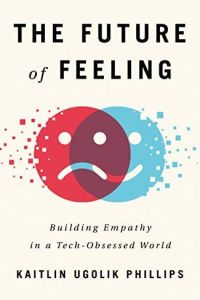Join getAbstract to access the summary!

Join getAbstract to access the summary!
Kaitlin Ugolik Phillips
The Future of Feeling
Building Empathy in a Tech-Obsessed World
little a, 2020
What's inside?
Technology created an empathy problem. Might today’s developers use technology to solve it?
Recommendation
Empathy allows people to love and care for one another, and differentiates human beings from machines. Yet as people’s dependence on technology continues to rise, empathy appears on the decline. In this timely text, journalist Kaitlin Ugolik Phillips asks if developers might use the technologies that caused these problems to fix them. She found she’s not alone in pursuing this question. Phillips’s research takes her – and the reader – into a growing movement made up of developers, journalists, educators, advocates and others who see empathy as an essential component of future technologies.
Summary
About the Author
Journalist and blogger Kaitlin Ugolik Phillips writes for VICE, Institutional Investor and the Columbia Journalism Review.





















Comment on this summary